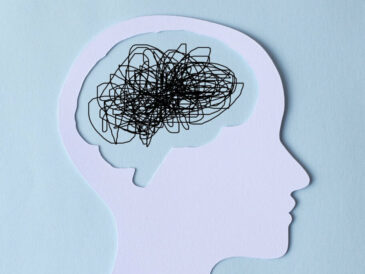The majority of people understand the concept of rest to refer to the occasions when we refrain from working or moving to unwind sleep or regain our strength. However, researchers in history and anthropology have found that the definition of what constitutes rest has changed significantly over time and between cultures.
Rest is very challenging to comprehend, not least of all because one can encounter it in such a wide variety of settings. The Rest Test is the world’s biggest research on rest, and it was recently set up by an international and interdisciplinary group of scientists led by Durham University.
The Purpose of the Research is to Improve Our Understanding of What Rest is
The Rest Test is an online questionnaire created to examine people’s patterns of resting as well as their perspectives on resting and busyness. We intend to investigate how people’s conceptions of rest and the activities they partake in to achieve it differ from one another. Do people believe that resting is the thing that opposes working? Which kinds of activities tend to be the most relaxing? What does it feel like on the inside for people when they are “at rest,” and does getting more sleep make a difference in how you feel?
The Mode That is Activated by Default
People tend to think of sleeping or sitting down when you mention rest. But anyone who has ever felt their mind racing in the hours leading up to sleep knows all too well, physical rest is not always the same thing as mental relaxation.
An intriguing discovery that has surfaced from cognitive science and provides a fresh perspective on the idea of “rest” is the notion of the state of the rest of the nervous system. This idea proposes that even when our bodies are at rest, our minds are still engaged in various activities. During neuroimaging, it has been discovered that people’s brains exhibit pretty stable patterns of activation in a system of brain areas known collectively as “the default mode network” even when they are ostensibly “doing nothing.”
The default mode system has been found to have close ties to states of daydreaming and mind-wandering, which has led to the hypothesis that daydreaming may be the mind’s natural mode of operation when it is not actively engaged. (When people daydream, they are thinking thoughts that are unrelated to their immediate surroundings or whatever activity they are engaged in at the time.)

Daydreaming can take many forms and typically happens unintentionally as a natural part of the flow of consciousness. Some examples of daydreaming include daydreaming about an email you need to respond to while reading this article, daydreaming about cognitively organizing your day while commuting to work, or daydreaming about an argument you had with a loved one while in a meeting.
Multiple studies have found, in a manner that is in line with the hypothesis that daydreaming serves as a mental benchmark, that people’s brains tend to roam from the activity that they are currently engaged in at relatively consistent rates ranging between 30 and 50 percent of the time. People daydreamed 47% of the time when they were polled, according to a large-scale study that sampled the daydreams of 2,250 individuals using a smartphone app as the participants went about their everyday lives.
This finding is perhaps the most convincing. The percentage of people who daydreamed remained constant at 30 percent across a spectrum of 22 everyday activities, except having sex, where the percentage of people who daydreamed was significantly lower.
The Negative Aspect
Taking into account the fact that we spend approximately one-third of our lives sleeping, this suggests that we may spend almost as much time daydreaming as we do sleeping.
Even though daydreaming is extremely common, most people have a negative attitude toward the behavior. Daydreaming gets a bad rap thanks to derogatory phrases like “off with the fairies” and “zoning out,” which imply that those who engage in this behavior are unproductive, unfocused, and unhappy with their lives.

It has a somewhat undeserved bad reputation, according to the findings of some studies. Daydreaming has been shown to have bad impacts on a variety of duties, including reading, awareness, and recollection, according to a recent analysis of research on the topic.
The act of daydreaming while driving may also put drivers and passengers at risk of being involved in a car crash. According to research that was presented, 52% of drivers who were entangled in traffic accidents reported that they had been daydreaming just before the collision.
According to the findings of other studies, daydreaming may have psychological repercussions in addition to cognitive ones. There is some evidence that people who daydream have decreased levels of happiness, which has led to the saying that “a wandering mind is a frustrated mind.”
The Positive Aspects
Daydreaming, on the other hand, isn’t inevitably an activity that should be ignored or deterred. The advantages of daydreaming are starting to receive more attention thanks to recent scientific discoveries. Daydreaming, for instance, has been associated with increased creative ability, the capacity to resist temptation, the ability to solve problems, and the ability to envision the future.
The concept that daydreaming is essential to one’s happiness is another one that has been reexamined and refuted. Several studies have shown that the type of thoughts a person has while daydreaming can affect their mood after they wake up. For example, daydreaming is only connected to a depressed state of mind when the thoughts that occur during daydreaming are also depressing, inwardly focused, and ruminative.

Daydreaming and using your imagination have been shown to have distinct positive effects on one’s health in other studies. It is possible to increase people’s levels of happiness by having them participate in an activity called “positive mental time travel,” in which they envision four positive moments that will take occur the next day. In a similar vein, recent findings from the research indicate that daydreaming about one’s loved ones may be a remedy for feelings of isolation by promoting a feeling of human engagement.
It’s possible that daydreaming can be relaxing because it provides relief from the outside world. (Take into consideration what your life might be like if you were unable to mentally escape the world outside of you whenever you desired!) It has been suggested that daydreaming is a method of taking mental breaks when we are performing mundane tasks; a method of resetting our attention (or “dishabituation,” to use the technical term). Daydreaming could be something that individuals actively enjoy doing and turn to for amusement, comfort, and release from stressful situations.
Be Present
Daydreaming, despite the widespread belief that it has only negative effects, does have some positive benefits. We are commonly made aware of the advantages of “being in the moment,” which has been evidenced in the great interest and prominence of mindful awareness as well as the necessity to “still the mind.” However, what is the advantages of imagining things that are not related to the here and now and escaping the present moment?
The nature of one’s daydreams and the circumstances in which they occur are likely to have a significant impact on the range of benefits associated with daydreaming as well as the nature of the relationship between daydreaming and rest. A busy mind that is full of ideas of tomorrow’s responsibilities, for instance, is probably not going to be beneficial to a relaxing night’s sleep.
However, mentally transporting yourself back to simpler times by recalling fond childhood memories can be just the thing to help you unwind and relax after a stressful commute. Daydreaming, on the other hand, does not represent a pointless mental meandering; instead, it has the possibility of improving our lives in many different ways.





